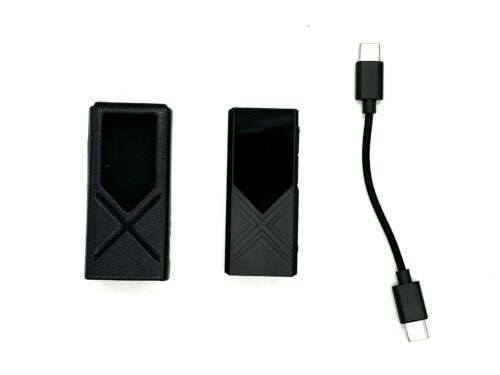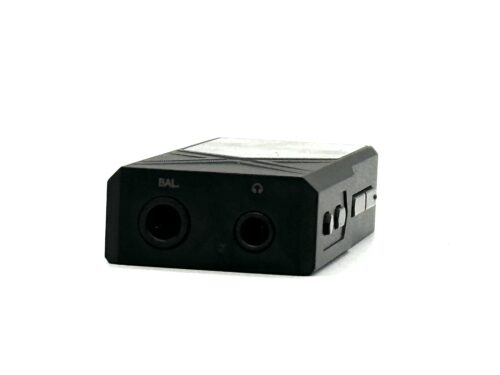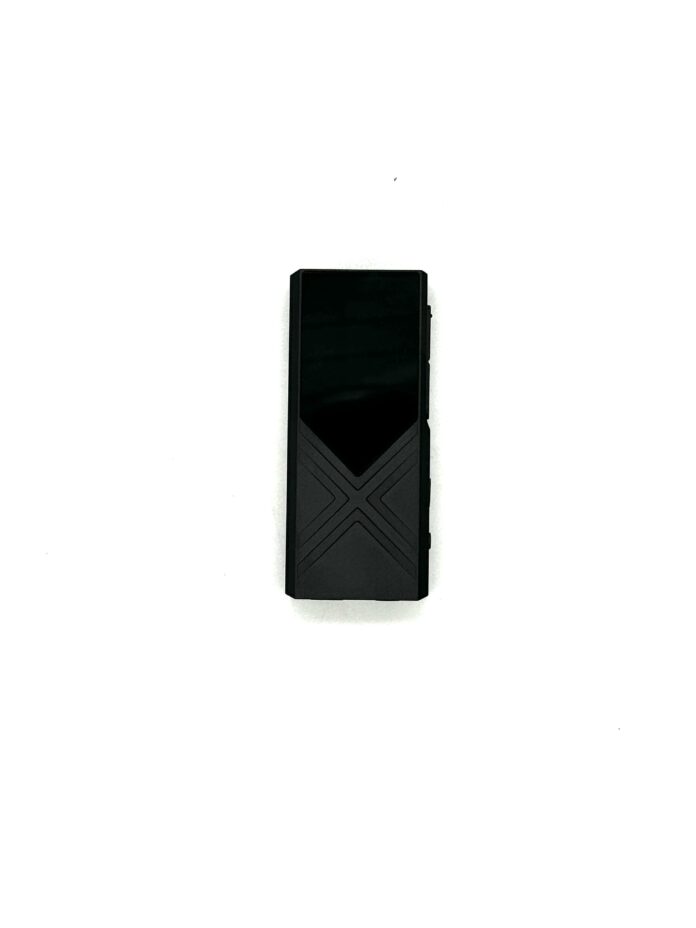At this point Fiio really needs no introduction. They’ve introduced successful lines of IEMs, headphones, DAPs, desktop and dongle DAC/Amps, and even a cassette player. Their acclaim has been sung far and wide on previous releases, and today we have a new one. The KA17 looks to be a boon at the entry level of their offerings. A dongle DAC/Amp, this is a quirky and impressive little device. With heaps of power and quality, the KA17 packs in features while staying at a reasonable $149.99 price tag. But how does it sound? That and more ahead.
What’s in the Box:
- KA17 DAC/Amp
- Leather case
- USB Type C Cable
- USB Type C to USB Type A converter
- Quick Start Guide

Build:
Off the bat, the KA17 looks very similar to what is probably its little sibling, the Jade Audio KA13. Jade of course is Fiio’s most entry level line of products. But it should be noted that while its DNA may lay with an earlier Jade line product, Fiio happily declares this as part of their brand’s offerings.
At first glance, you’ll notice the pentagonal OLED display and X style design on the front of the body. It’s modern and the X design gives it some character. On one side you get some physical buttons. There’s a volume rocker, a selector button, and a switch for turning on “Desktop Mode.” However, we’ll get into desktop mode later.
On the next side are your 3.5mm single ended and 4.4 mm balanced headphone outputs. On the other two sides are standalone USB Type C ports. One of them is for connecting your listening device to the DAC stage of the KA17. The other is for powering the KA17 up and putting it in the aforementioned “Desktop Mode.”
Overall this is a great build. It’s durable but light, which makes this great for portable use. However, this is a pretty powerful device that you may want to use on a desktop. In fact, the first text you see when you open the box says “This is actually a mini desktop DAC/Amp.” We’ll get into how the sound stacks up to that statement, but as far as build goes, I could see this being great for an office IEM or closed back headphone setup. The small positively tiny factor ensures it can be used on just about any desk.

Design:
The DAC stage consists of two ES9069Q chips “powered by fourth-gen 32 bit HyperStream technology.” It also uses the 16 Core XMOS XU316 to process digital signal through USB. The KA17 can do just about any file format you want. It can do PCM up to 768kHz/32 bit, DSD up to SD512 and DOP256, and SPDIF up to 96kHz/24 bit. It’s also able to handle MQA files. Do note that unlike many of Fiio’s dongles, the KA17 does not support wireless connection.
It’s as an amp, though, that the KA17 fascinates. Using THX AAA 78+ amps with 8 op amps, this thing is quite powerful for a $150 dongle. It’s capable of up to 140 mW single ended and 300 mW balanced, both at 32 ohms. But now enter “Desktop Mode.” With this enabled it goes up to 270 mW single ended and 650 mW balanced, again both at 32 ohms. “Desktop Mode” works by plugging in an external power supply and maximizing the amount of power the KA17 can use for its amp stage.
Now to be clear, this isn’t “blast your head off” levels of power, but it’s more than enough to power even demanding high-end headphones like the Final Audio D7000. Overall, the KA17 is innovative in its design and highly capable as a DAC/Amp.

Sound Impressions:
I want to start out with an overall image of what the KA17 sounds like in general before getting into specific pairings. Overall, the KA17 goes for a balanced, mid-forward presentation. This means that it pairs best with neutral or brighter headphones, whereas warmer ones may come across as too warm. Though, if that’s the sound you like, then they may make for a great pairing.
I started my listening with the Final Audio B2. My impressions were that the soundstage was quite wider than I expected. I found the response to be a bit warm with mid range frequencies taking center stage. That said, I found bass to be ample, mids to be natural and clean, and highs to be clear albeit a little subdued. Then I took the Campfire Audio Supermoon for a spin. I chose this IEM as I wanted to see how the KA17 might scale with higher end equipment. I was surprised to see that it scaled quite well. Bass was a bit stronger and highs a bit more pronounced, while the mids stayed forward and natural. That said, the texture wasn’t perfect and I would have loved a little bit more sub bass extension.
Then I wanted to try out the KA17 with some over ear headphones, just to get a sense of how it could drive them. Starting with the Meze 109 Pro, performance was quite good. The brighter nature of the 109 Pro made for a great pairing as vocals shined while top end frequencies were mellowed out a little bit. Still my gripes about texture and sub bass extension were still there. However, the KA17 delivered plenty of power to get a solid performance out of the 109 Pro.
Finally, I plugged the Final Audio D7000 in. Now, this is complete overkill. I doubt there are listeners out there using a $3,500 headphone like the D7000 with a $149.99 dongle like the KA17. But again, I wanted to see how the KA17 could scale, and I also wanted to find out how the KA17 could potentially stack up as a desktop level solution for a harder to drive headphone. The results were a solid sound with the KA17 delivering more than enough power to drive the D7000. The sonic characteristics ran about the same – an overall warm leaning sound.
All in all, the KA17 impressed with IEMs and headphones across a broad spectrum of price ranges. The device is warm and mid focused but presents dynamics and details quite well. Now to get it out of the way, if you crave sub bass or high levels of textured detail retrieval, this may not be the right option for you.
That said, if you are looking for a portable solution with enough power to drive most headphones, provides a beautiful mid range presentation, and offers an incredible value proposition, then the KA17 is worth a try.

Summary:
The new Fiio KA17 is a quirky but solid device. At the entry level, this is a dongle that can grow with you as you go on your audiophile journey. It’s not perfect but for $149.99, this is a versatile and tiny device that can get your headphones juicing anywhere from on the go to at your desk.
The Fiio KA17 is available now at Audio46.
MAJORHIFI may receive commissions from retail offers.








